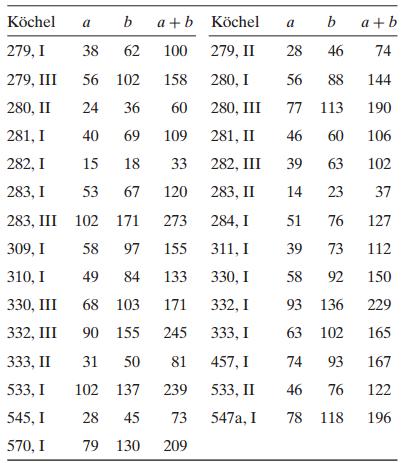The golden ratio is = (1 + 5)/2. John Putz, a mathematician who was interested in
Question:
The “golden ratio” is φ = (1 + √5)/2. John Putz, a mathematician who was interested in music, analyzed Mozart’s sonata movements, which are divided into two distinct sections, both of which are repeated in performance (see References). The length of the “Exposition” in measures is represented by a and the length of the “Development and Recapitulation” is represented by b. Putz’s conjecture was that Mozart divided his movements close to the golden ratio. That is, Putz was interested in studying whether a scatter plot of a + b against b not only would be linear, but also would actually fall along the line y = φx. Here are the data in tabular form, in which the first column identifies the piece and movement by the Köchel cataloging system:
(a) Find the equation of the least squares regression line. Superimpose it on the scatter plot.

(b) On the scatter plot, superimpose the line y = φx. Compare this line with the least squares regression line (graphically if you wish).
(c) Find the sample mean of the points (a + b)/b. Is the mean close to φ?
Step by Step Answer:

Probability and Statistical Inference
ISBN: 978-0321923271
9th edition
Authors: Robert V. Hogg, Elliot Tanis, Dale Zimmerman





